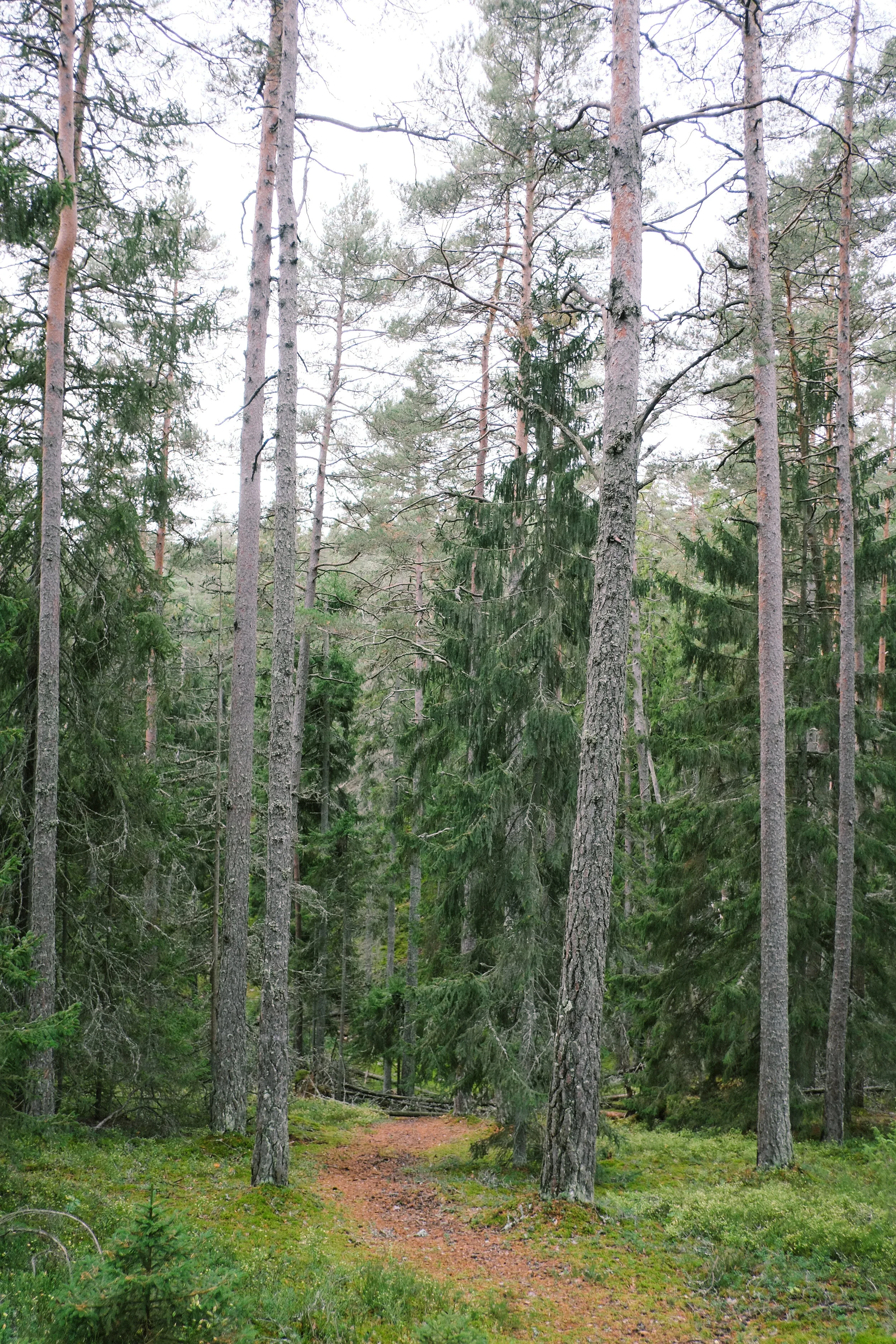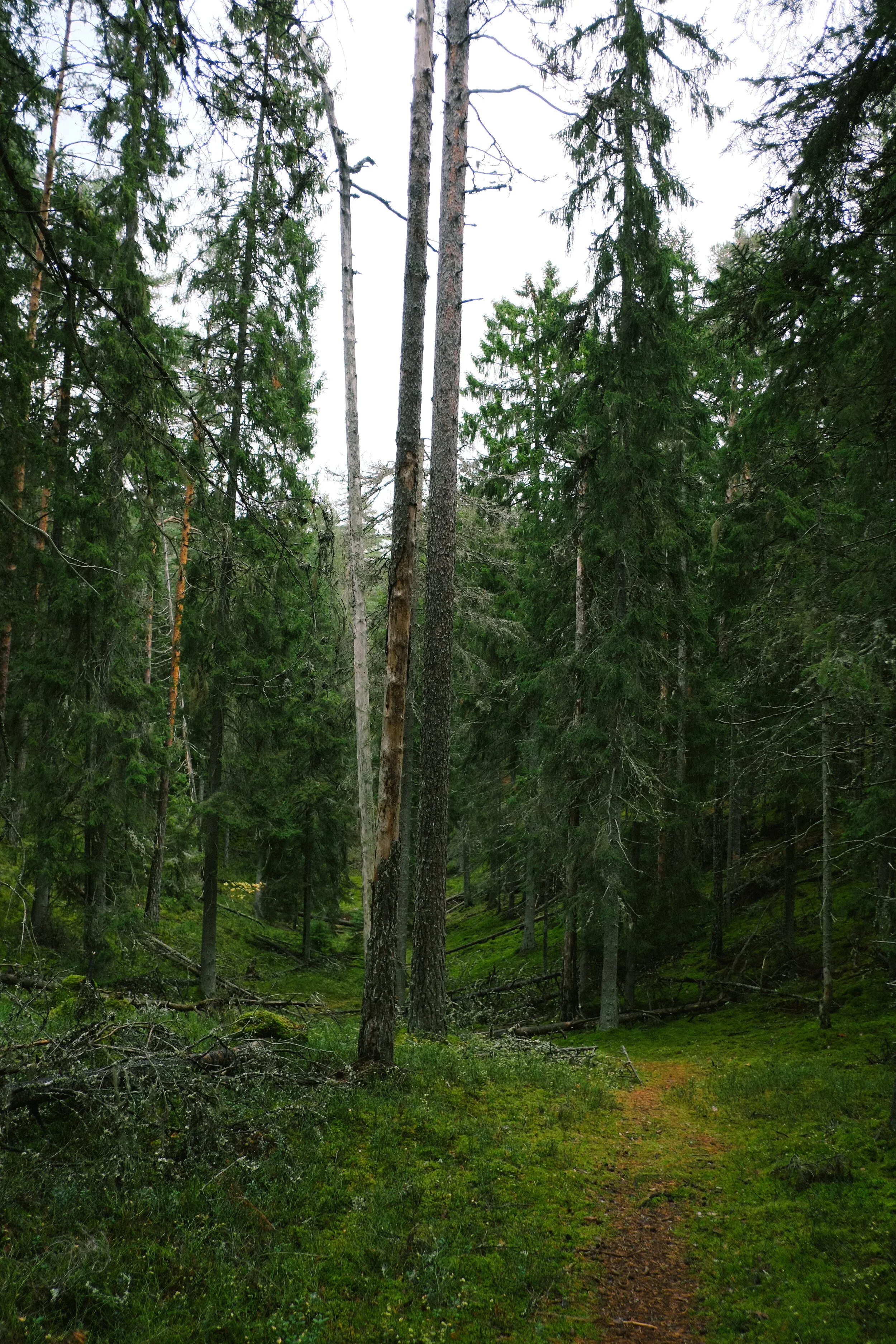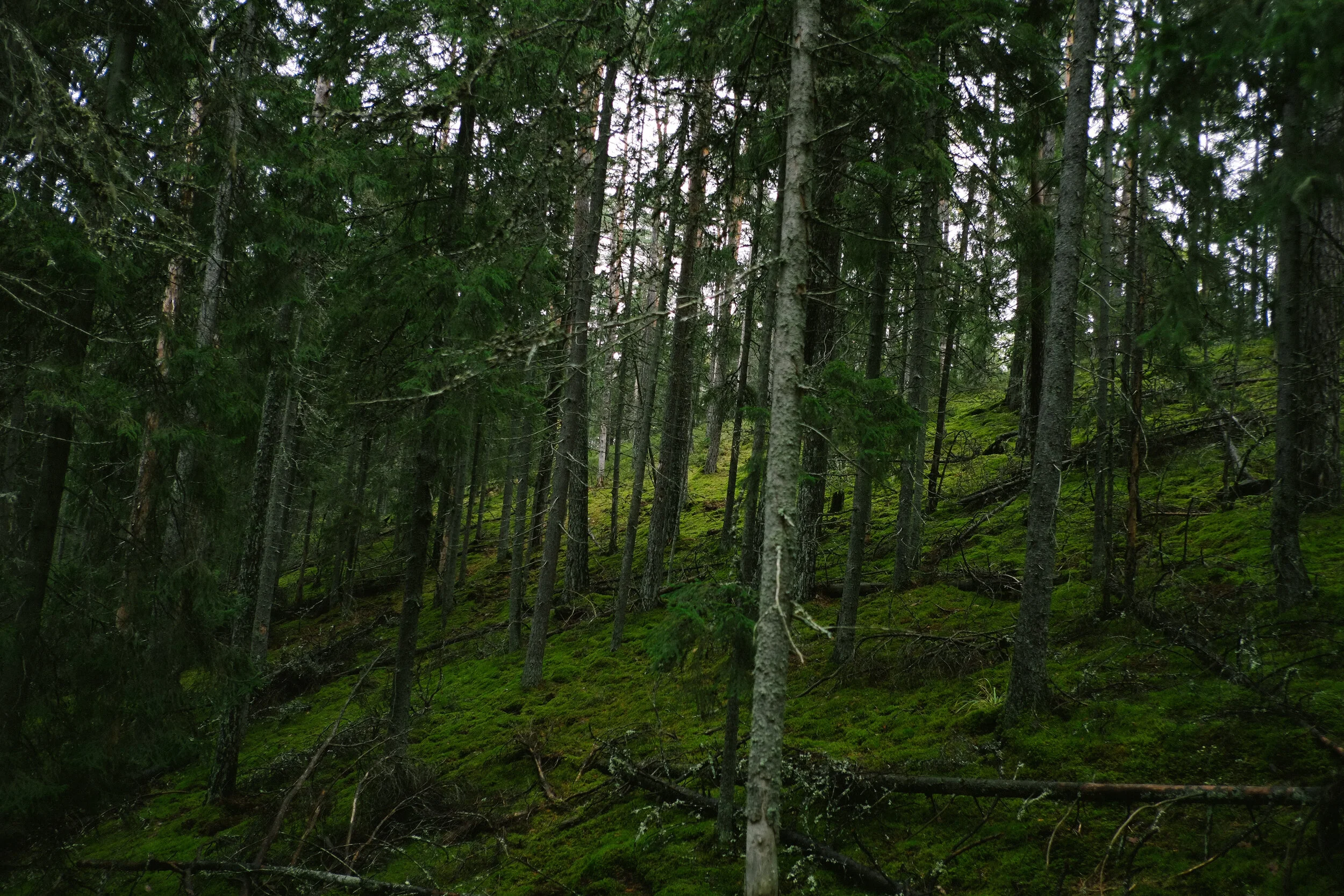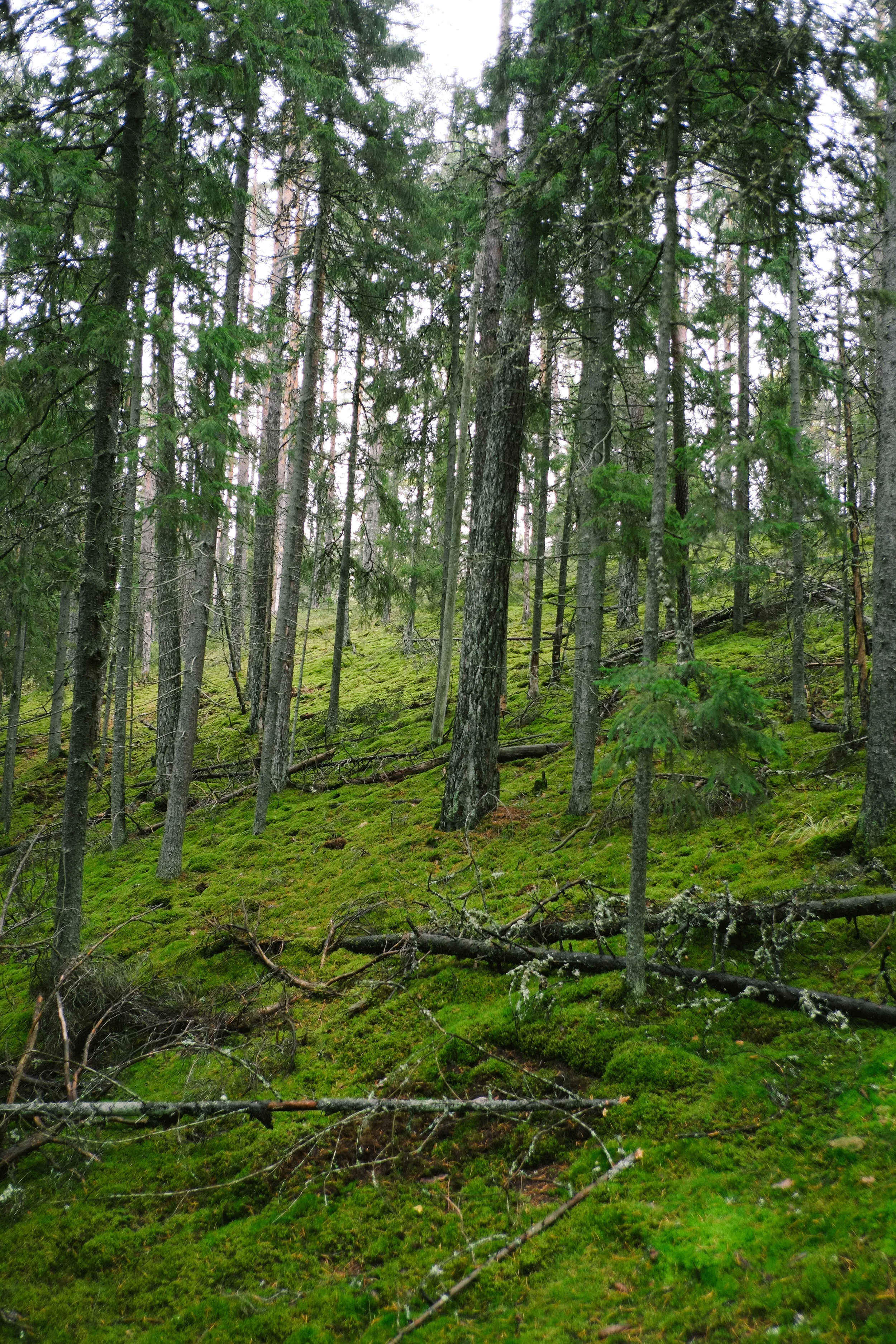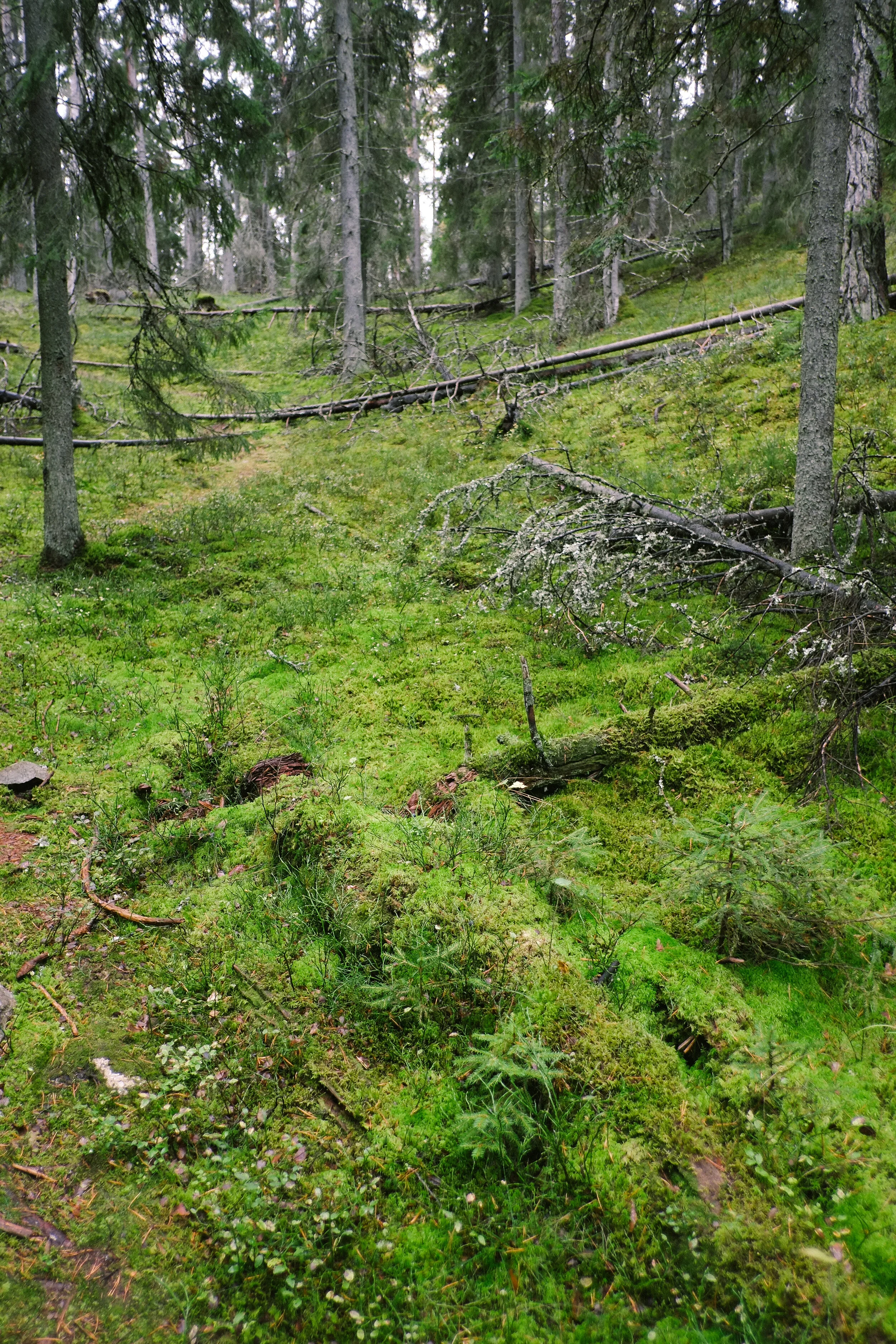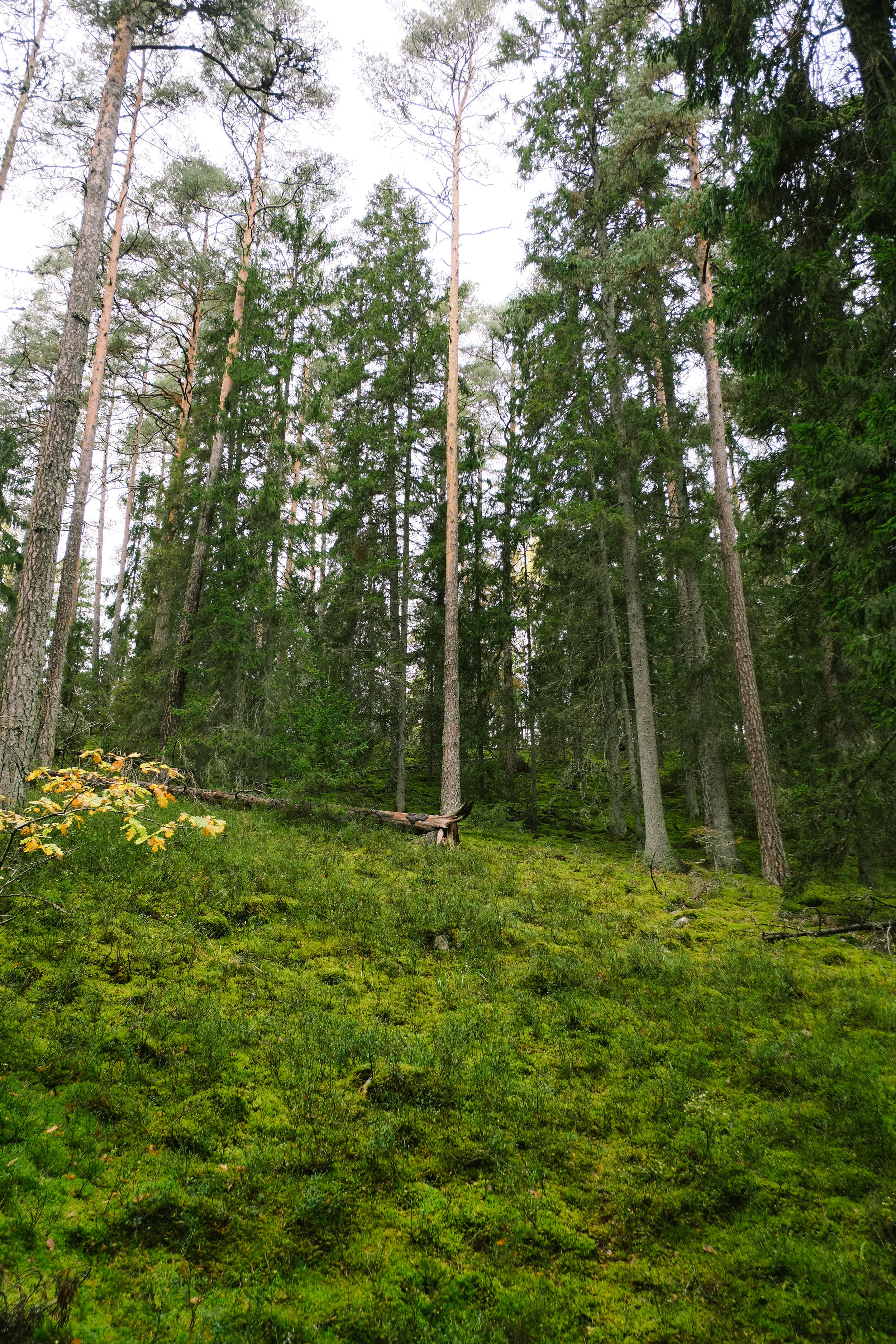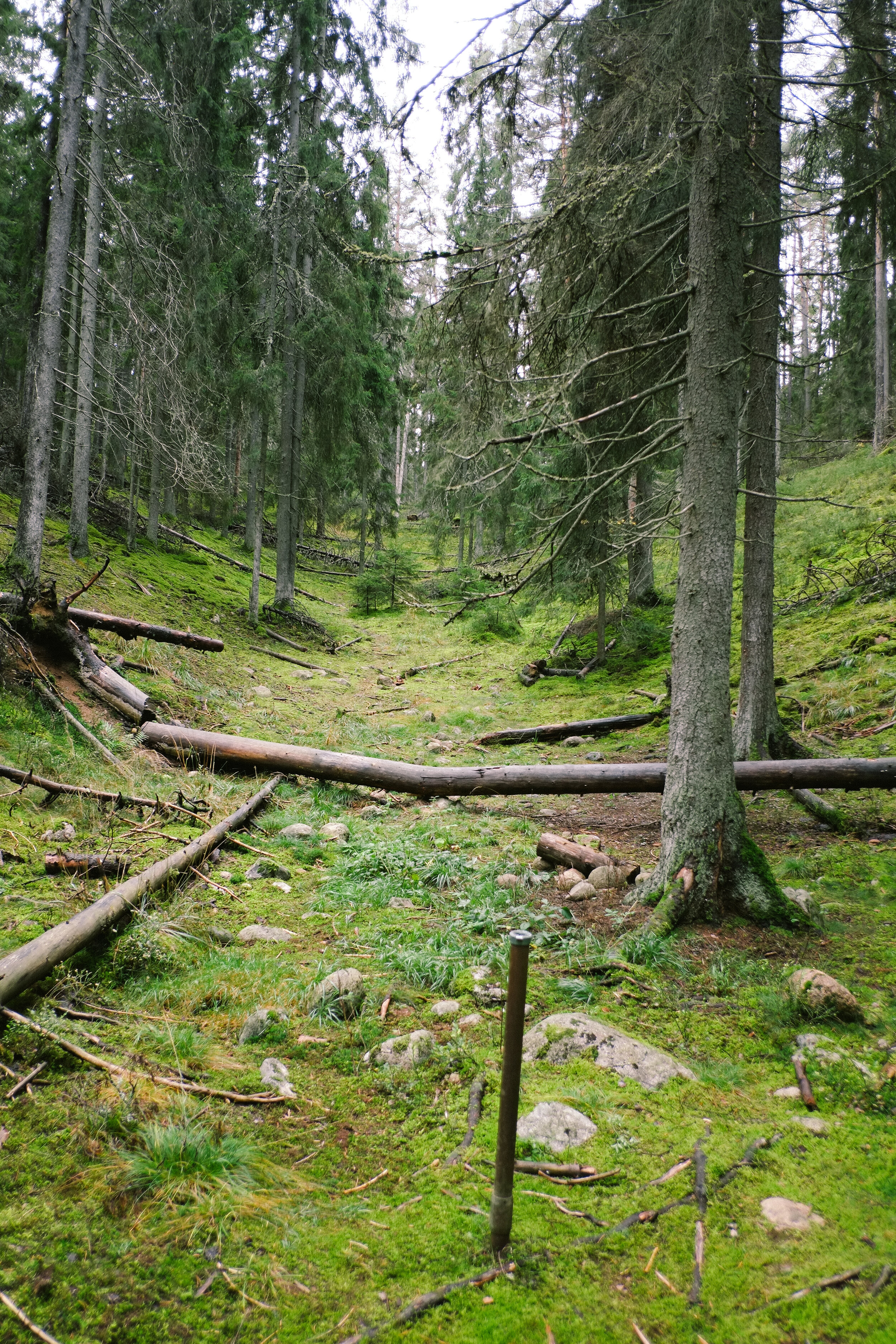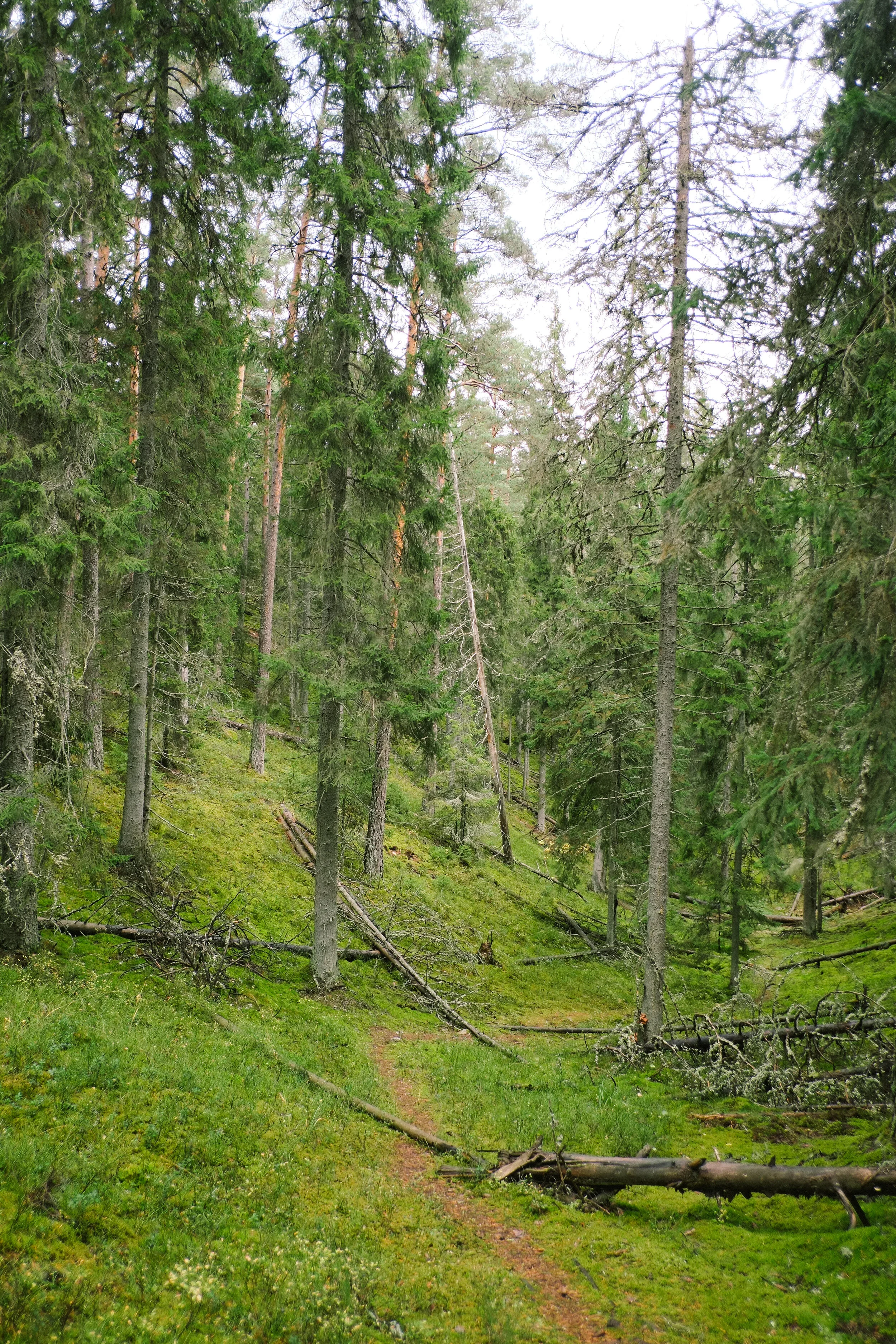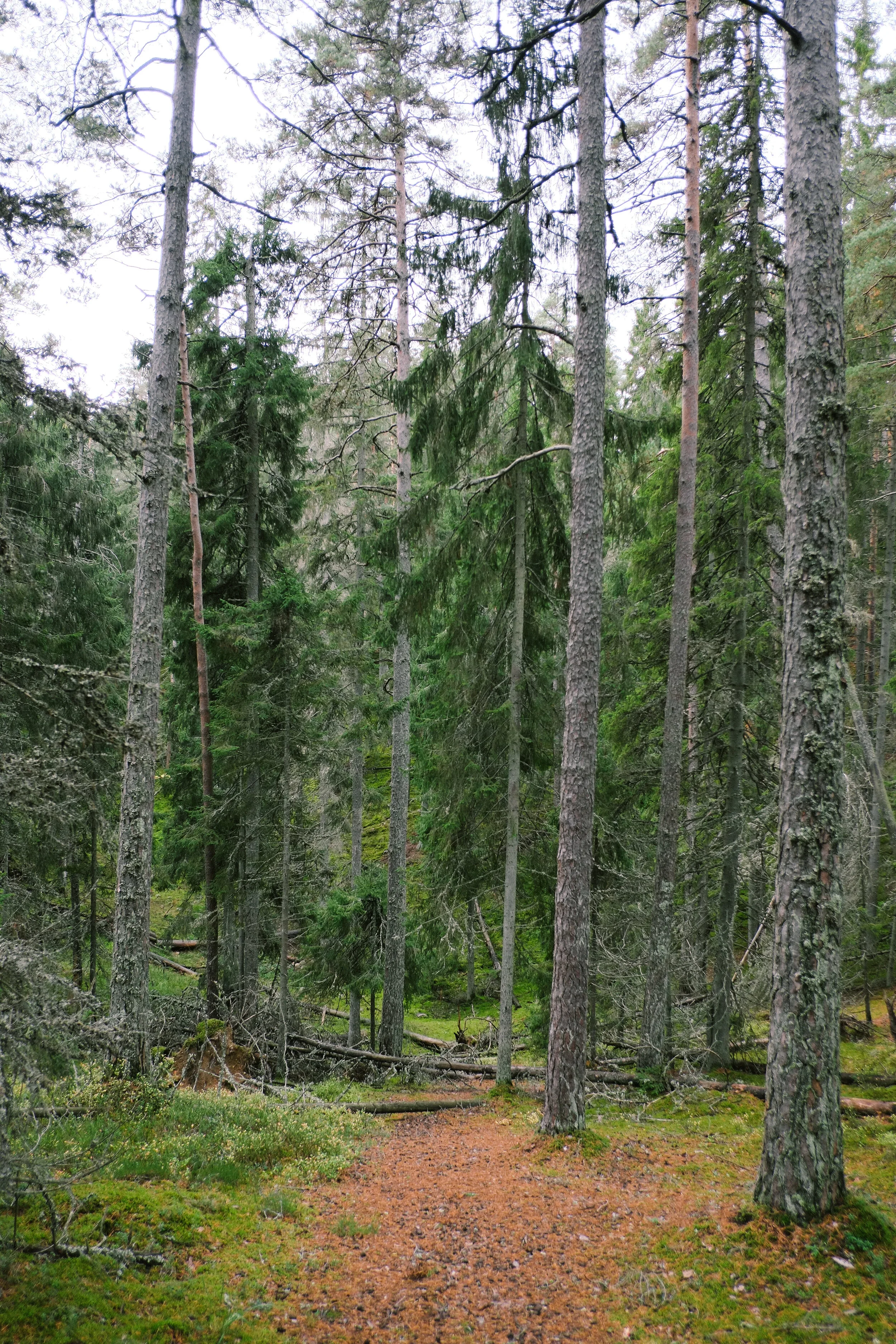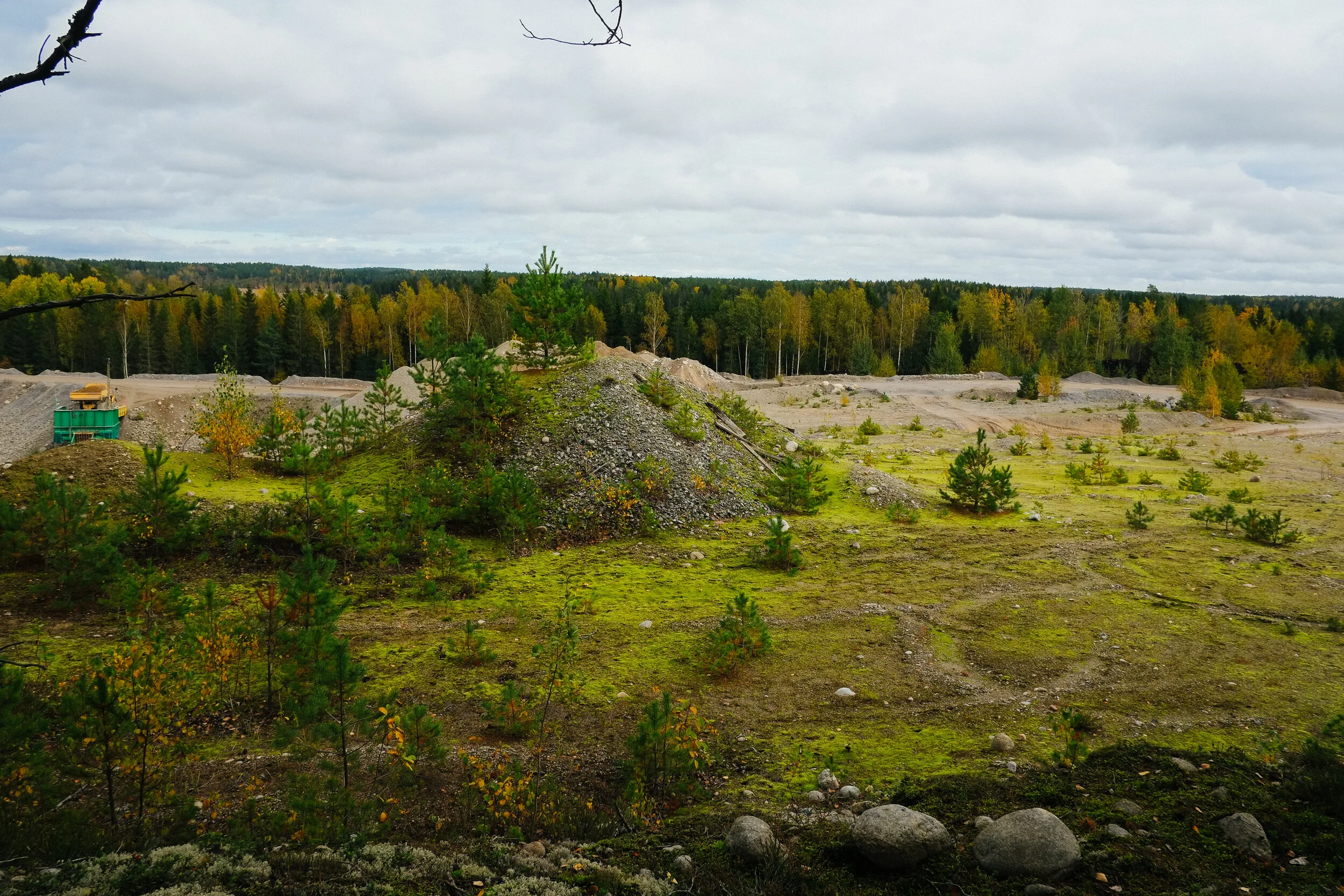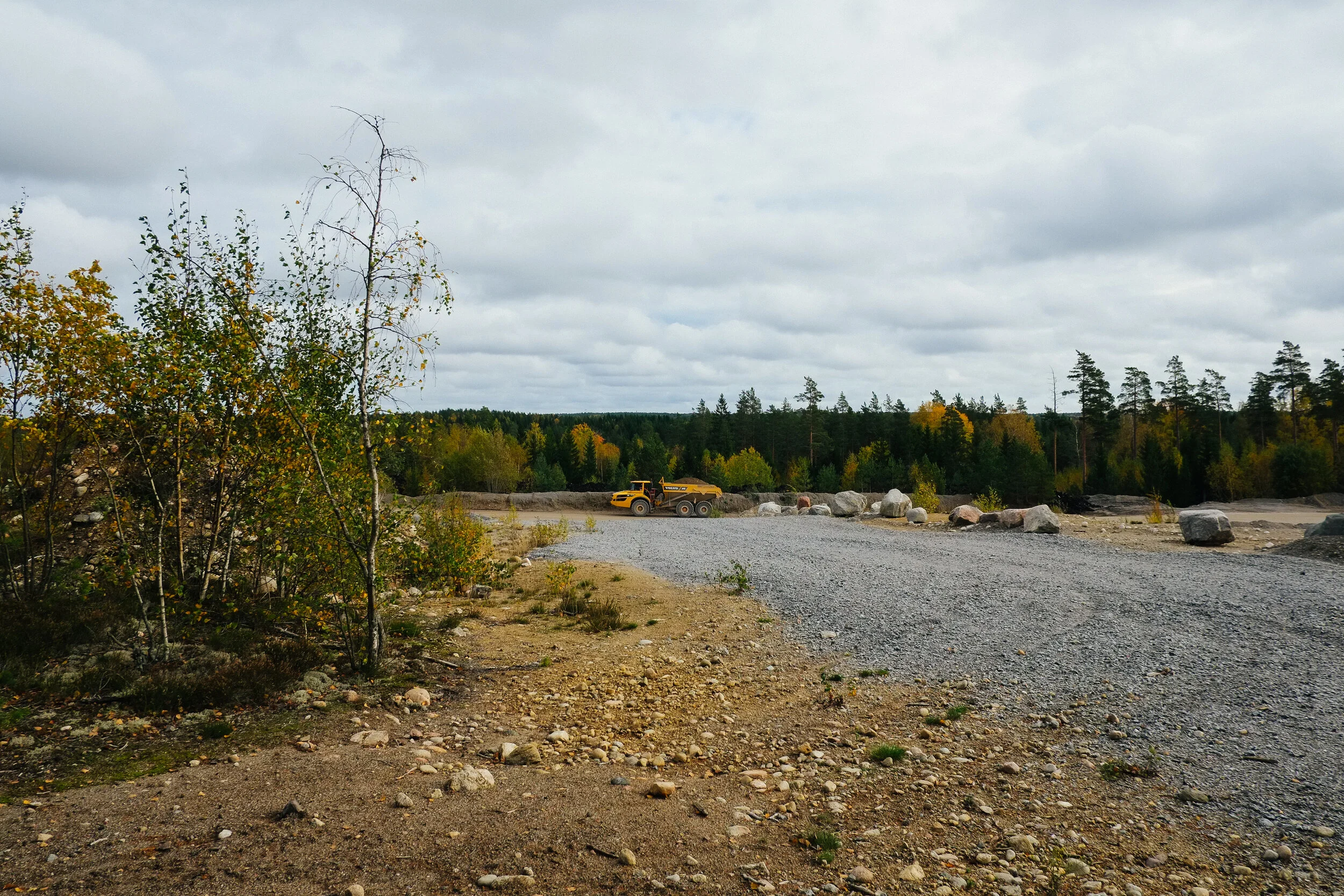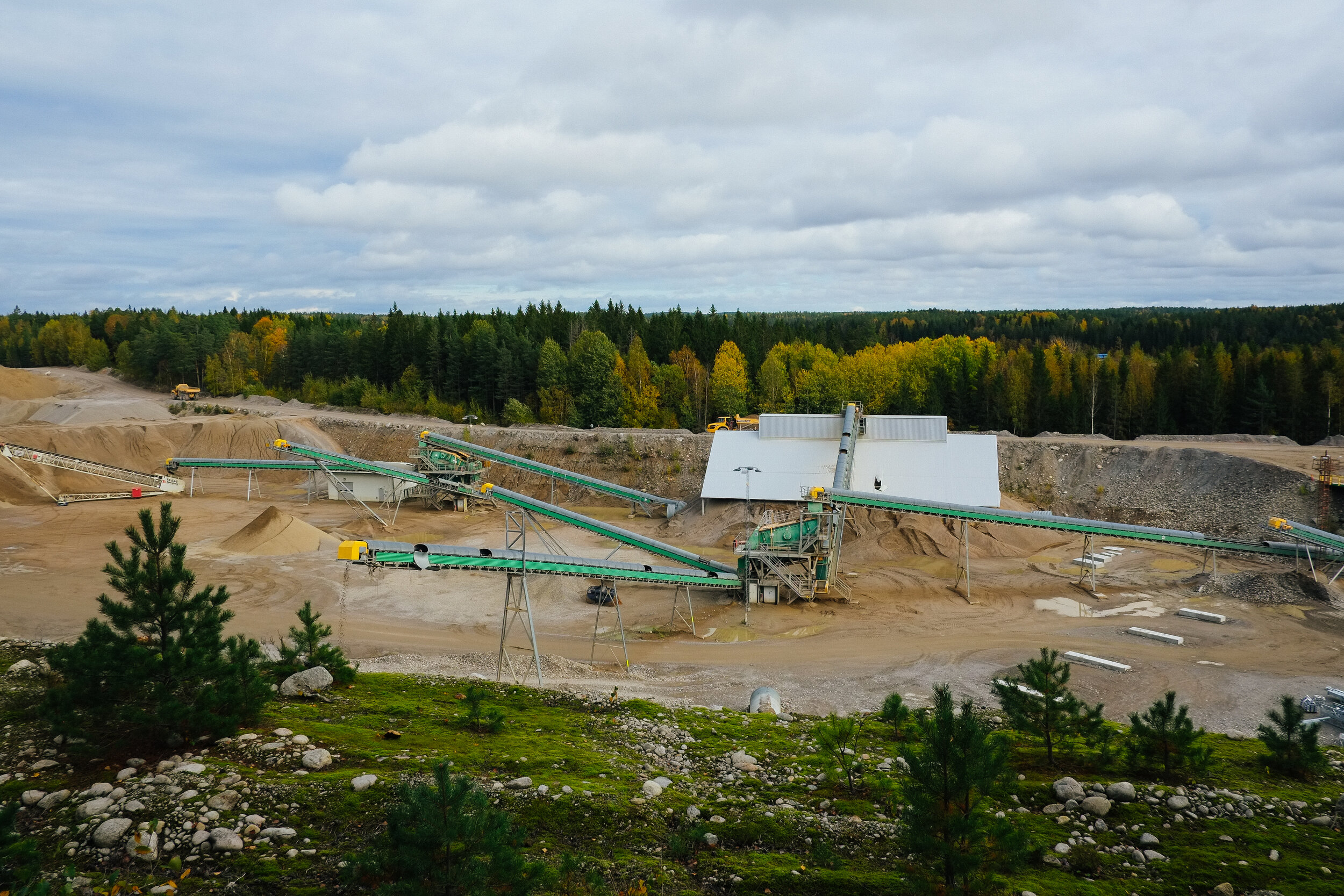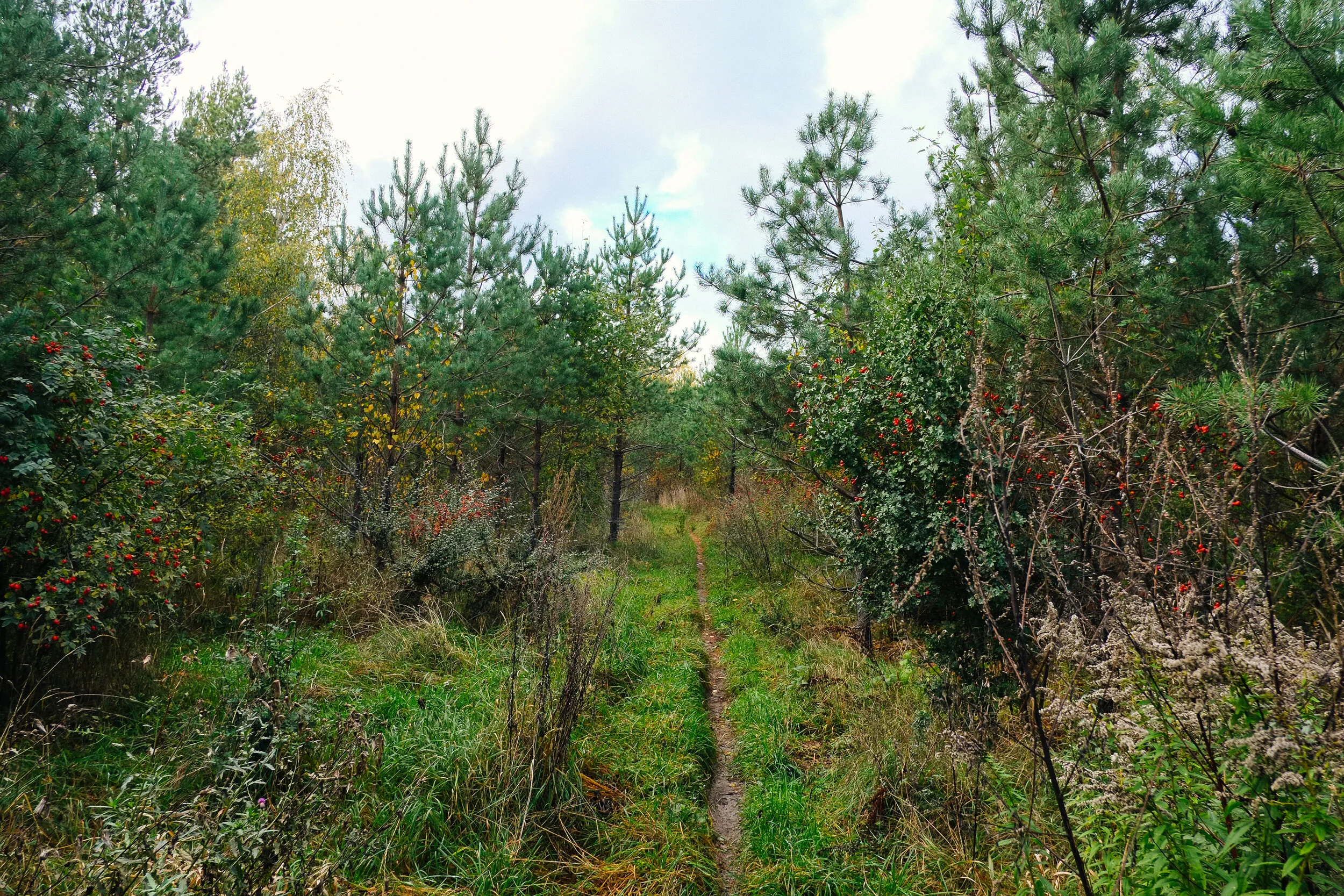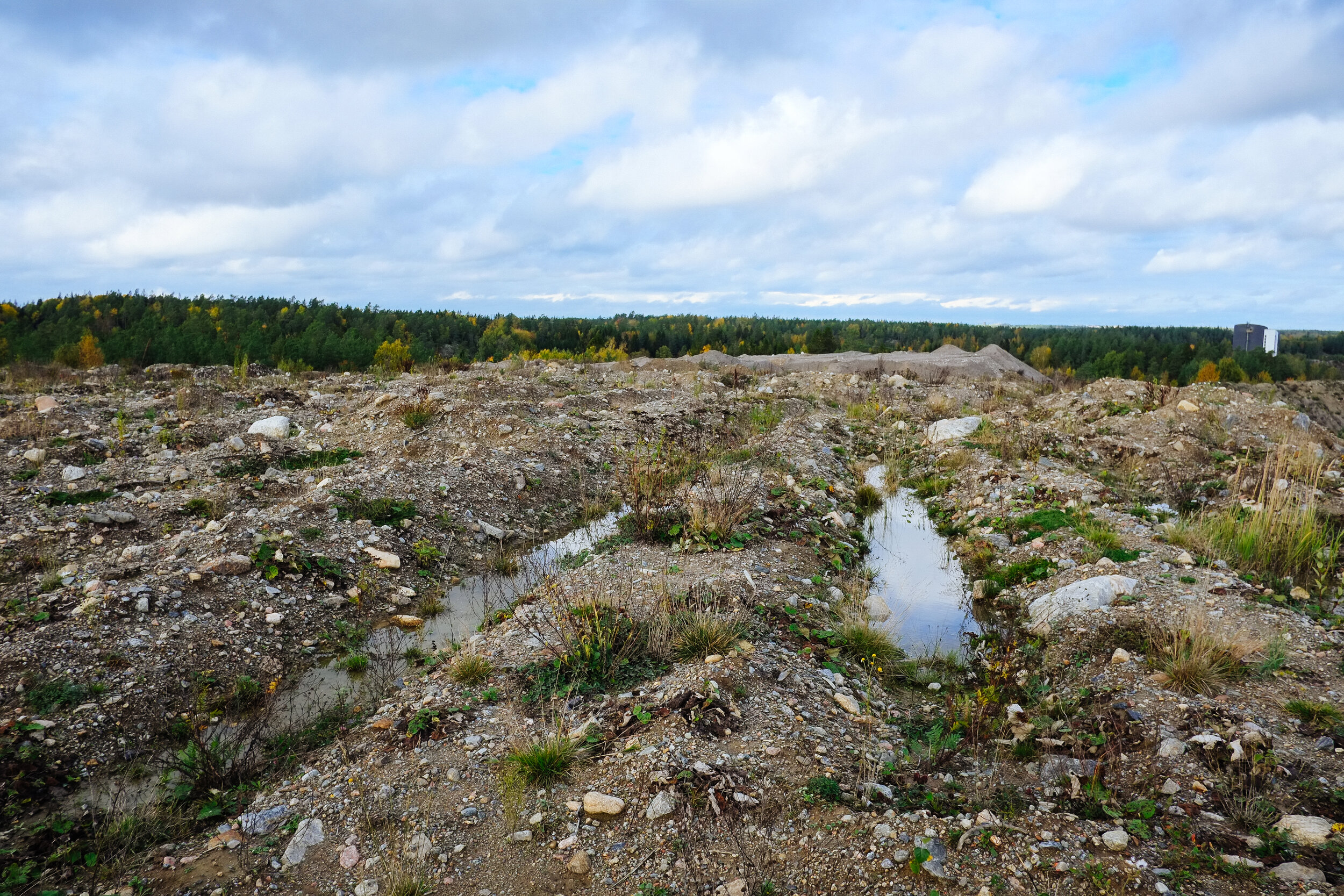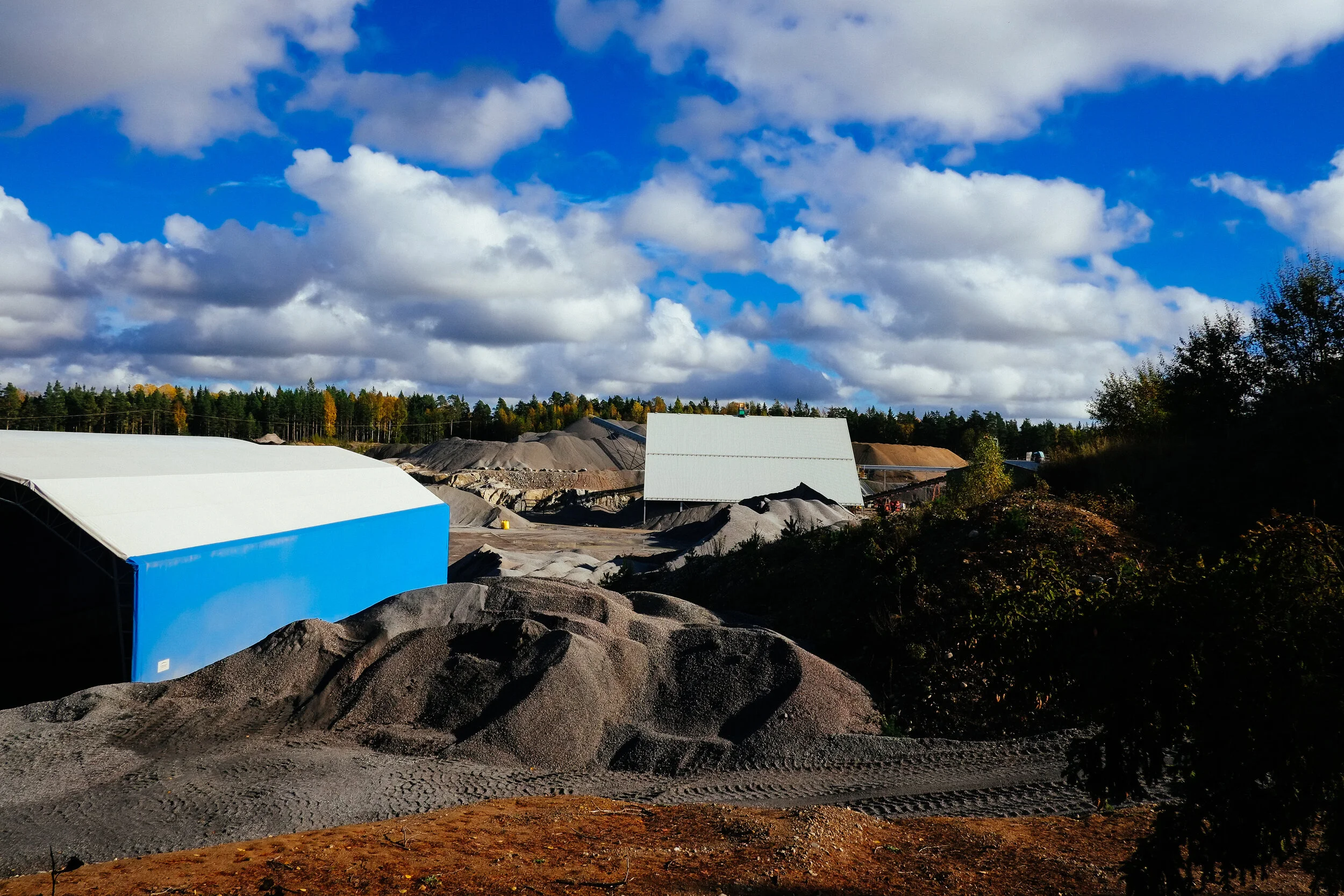Fieldnotes: Into the Hole
Matthew Ashton
The last monument was a sand box or a model desert. Under the dead light of the Passaic afternoon the desert became a map of infinite disintegration and forgetfulness. This monument of minute particles blazed under a bleakly glowing sun, and suggested the sullen dissolution of entire continents, the drying up of oceans – no longer were there green forests and high mountains – all that existed were millions of grains of sand, a vast deposit of bones and stones pulverized into dust. Every grain of sand was a dead metaphor that equaled timelessness, and to decipher such metaphors would take one through the false mirror of eternity. This sand box somehow doubled as an open grave – a grave that children cheerfully play in.
Robert Smithson – Monuments of Passaic 1
Part I Into the Hole
Corpses of fallen pines littered the landscape, strewn haphazardly across the descending path like oversized matchsticks. Woody torsos illustrating various stages of decomposition. Some had freshly stumbled, still tentatively held upright by their Pinaceae brethren, while others had already succumbed to their entropic fate, resembling nothing more than creases in the green mossy carpet of the forest floor. Spongy residues of grandeur popping like bubble wrap underfoot. The forest had an ancient air about it — verdant, messy, and shrouded in an enchanting mist. Exuding that magical quality so palpably absent from the manicured neat rows of timber we erroneously call forests in these northern latitudes but are essentially just plantations — cash crops of commodified nature. Despite the antiquated atmosphere however, most of the trees themselves were not particularly old — a few aging spruce trees occupied the center of the depression, but the sloping embankments were inhabited by adolescent pines, few with a diameter thicker than a lamp post. Had this landscape been harvested in the recent past, or did the loose sandy soil exert some physical limitation on the growth of the trees, nurturing them while young, yet betraying their shallow root systems with unstable footings as they matured? The battlefield remains of young timber and the fact that the forest has been protected since 1944 would suggest the latter hypothesis.2
Descent into the kettle hole, Pålamalm Nature Reserve, Botkyrka. The steep edges of the kettle hole are covered in lush vegitation and young pine trees. Images by Matthew Ashton.
Pålamalm nature reserve encompasses a 5.7-hectare patch of forest in Botkyrka municipality, some 30 km southwest of Stockholm. The forest is pleasant, but the primary object of conservation is the eerie crater enclosed within its pentagonal boundaries. The 31-meter deep depression in the landscape is a kettle hole — a geological remnant from the last ice age. The hole was formed around ten thousand years ago when a carving event dislodged a mountain of ice from the retreating Fennoscandian ice sheet, which at the time still covered most of the Scandinavian peninsula in a thick white blanket. Set adrift in the frigid meltwater, the iceberg eventually grounded on the bedrock, becoming engulfed in mud and sediment left behind by the scurrying water as it rushed toward the nascent Baltic. As the climate warmed, the ice sheet retreated further into the Scandinavian interior, slowing the torrent of meltwater to a trickle, yet the stranded iceberg remained, perhaps for centuries before eventually melting away. Its absence imparting a heavy trace on the landscape — a memory of the dramatic circumstances surrounding the birth of this territory now called Sweden.3
The cadenced drum of a nearby woodpecker held me momentarily in a trance as its woody beat reverberated around the natural amphitheater of the kettle hole, yet upon the birds’ swift departure from the scene, the illusion started to fray, and glitches of reality began to enter the picture. The soft mist still hung in the air, but it now appeared lackluster and heavy, not an ephemeral vapor, but a dirty haze of fine dust particles and diesel fumes. The absence of the woodpecker’s subtle acoustic performance accentuated a different sonic landscape — a cacophony of incessant drumming pounded the rim of the crater, like an angry sea, as a mechanical fleet harvested the earth just beyond it. The moss-covered embankments absorbed some of the noise, but it was overwhelming, coming from all directions simultaneously. The small patch of forest suddenly resembled a traffic island, a dislocated fragment of sunken nature, squeezed between material movements, capital flows, and infrastructural networks. In 1945 permission was granted to allow sand and gravel extraction on land abutting the reserve — only designated as such months earlier — and over the years, the quarrying operation has swallowed up large swaths of earth to the north, south, and east, trucking it off to feed the urban growth of Stockholm.4 The kettle hole remains as a subtle reminder of the incredible terraforming power of nature, yet it is now dwarfed by the massive manufactured canyon surrounding it. A tiny hole within a hole.
Part II Entropy
Humpty Dumpty sat on a wall
Humpty Dumpty had a great fall
All the king’s horses and all the king’s men
Couldn’t put Humpty together again.
The artist Robert Smithson cites this well-known English nursery rhyme as a way of understanding the concept of entropy. According to Smithson, entropy is “…a condition that’s irreversible, it’s a condition that’s moving towards a gradual equilibrium … You have a closed system which eventually deteriorates and starts to break apart, and there’s no way you can really piece it back together again”5 The term entropy comes from the Greek word ἐντροπῐ́ᾱ, meaning transformation, and was coined by the German physicist Rudolf Clausius in 1865 who laid the foundations for the second law of thermodynamics, which roughly states that as energy is transferred or transformed, some of it is wasted and that in any closed system there is a tendency for an increase in disorder, randomness, and uncertainty.6 Smithson was fascinated by the concept throughout his career, and it could be argued that many of his major artworks, such as “Spiral Jetty” (1970) and “Partially Buried Woodshed” (1970), were attempts to make visible the processes of entropy. One project which succinctly manages to capture and illustrate the forces of entropy at work is “Asphalt Rundown” which was performed in an abandoned quarry on the outskirts of Rome in 1969. A load of molten asphalt was poured directly from a dump truck down the steep eroded slope of the quarry, oozing and bubbling as gravity pulled it towards the bottom of the pit. Initially the hot liquid flowed like water across the sandy slope, yet as it quickly dispersed and cooled, it began to solidify, transforming into a sluggish black blob. Eventually its downward movement came to a complete halt, solidifying into a hard mass and becoming itself a part of the landscape — another layer of sediment to be gradually broken down by the natural forces of wind, water, time, and erosion.7
The twin holes of Pålamalm — the kettle hole and the sand and gravel quarry — are both examples of entropic landscapes; or rather, they are both a part of the same entropic landscape, revealing it, however through different perspectives, scales, and temporalities. The formation of the esker, which contains the kettle hole along with the glacial fluvial deposits exploited by the quarry can be likened to the slowly solidifying material in Smithson’s “Asphalt Runway.” Ten thousand years ago the territory of northern Europe was in a violently transitional state, as the earth was repeatedly remade by the powerful forces of ice, water, and mud. Unfathomable amounts of energy must have been transformed and exerted upon the landscape but just like molten asphalt, eventually this energy dissipated and found an equilibrium — glacial torrents settled into gently meandering rivers, ice lakes found the sea, and migrating stones came to rest, eventually gathering moss, soil, and vegetation. The esker is a petrified river, it is dynamic motion frozen in time — yet the settling of this landscape was not the end of its transformation, it just marked a change of pace. Violent terraforming capabilities were replaced by the slow transformations of weather and erosion, of growth and decay. The kettle hole is still in a process of transformation, as evidenced by the ongoing struggle of pine trees fighting against its steep inclines. Each tree that falls provides nutrients and support to the generations that follow, allowing them to grow just a little higher, and stand a little longer in those sandy soils.

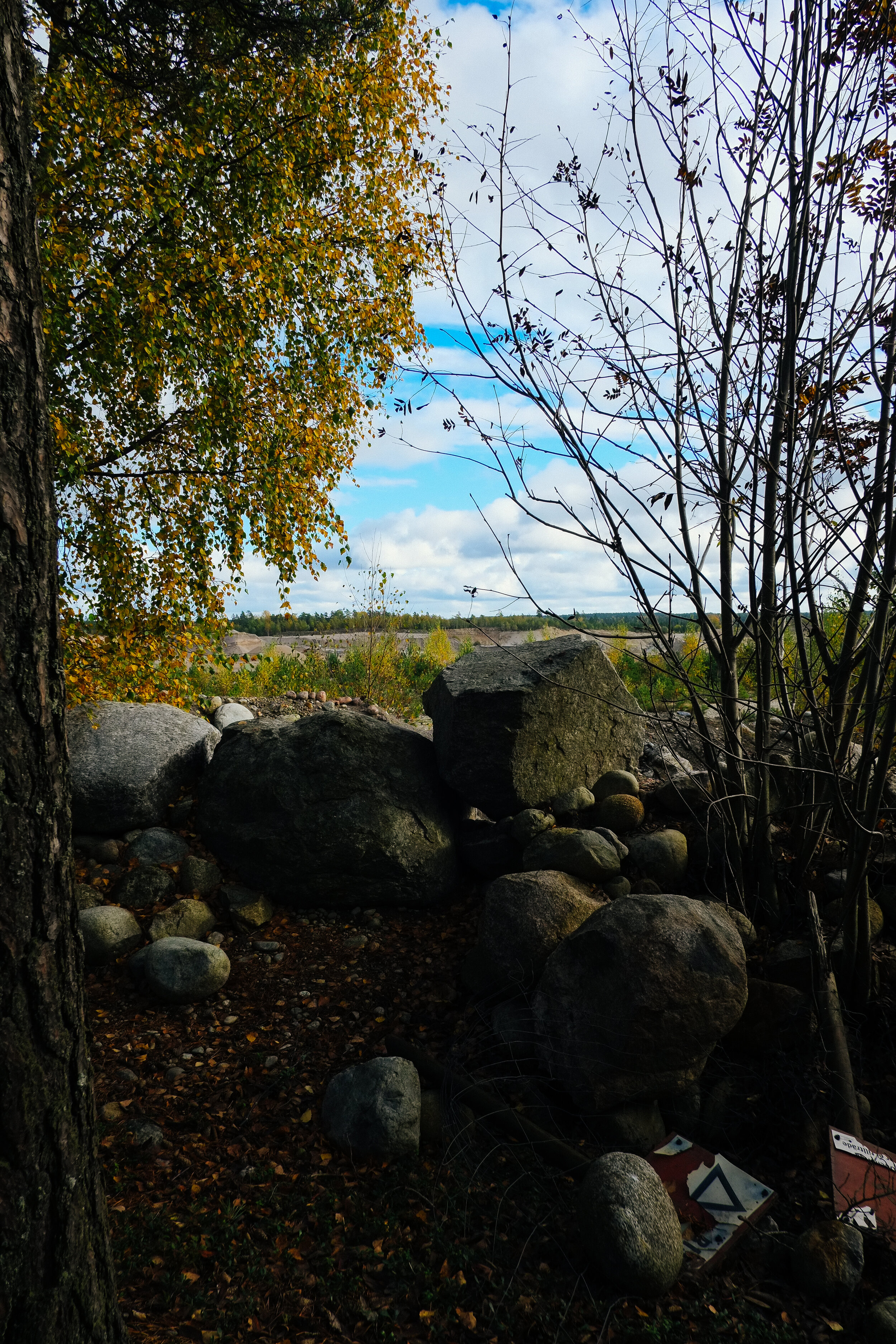
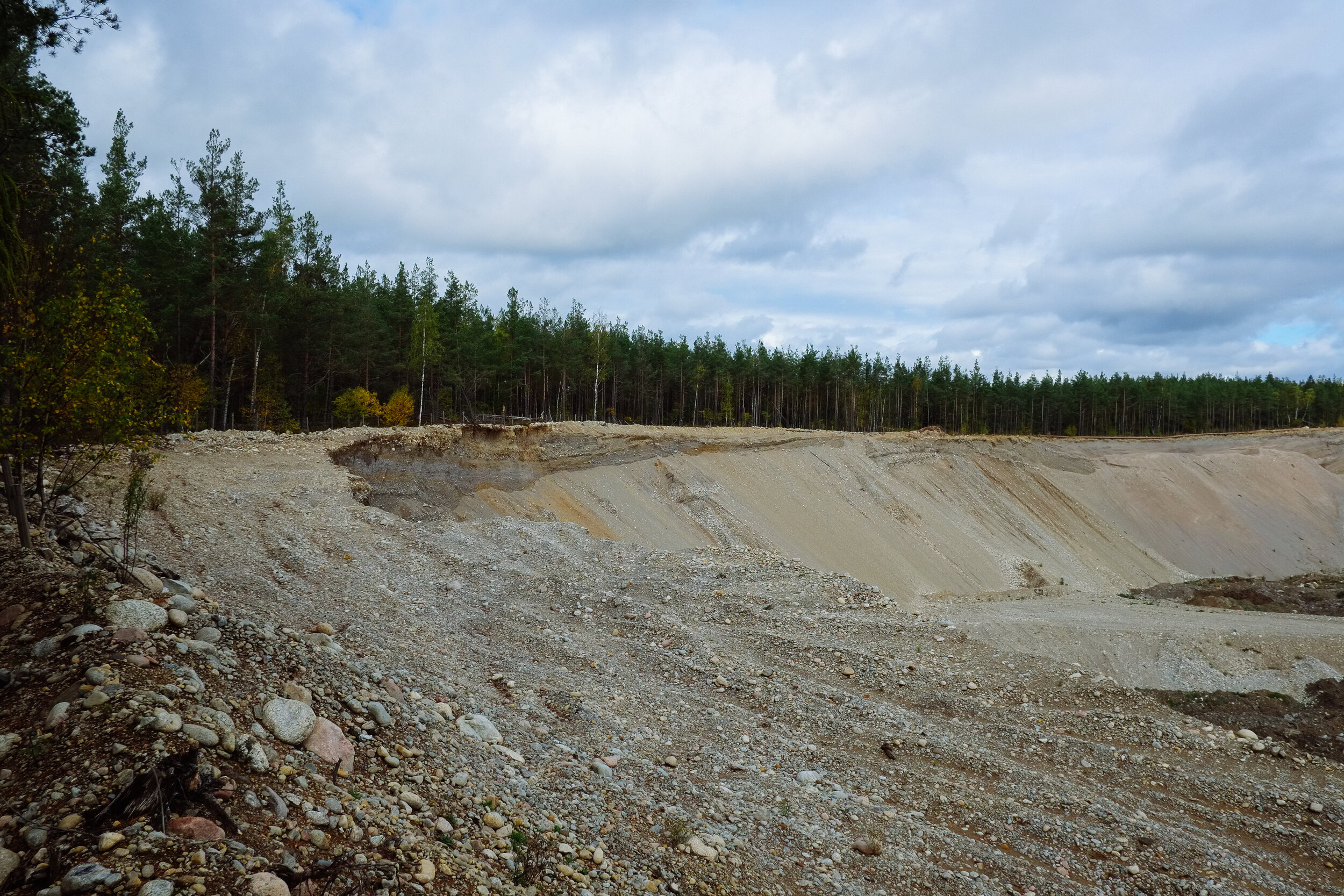
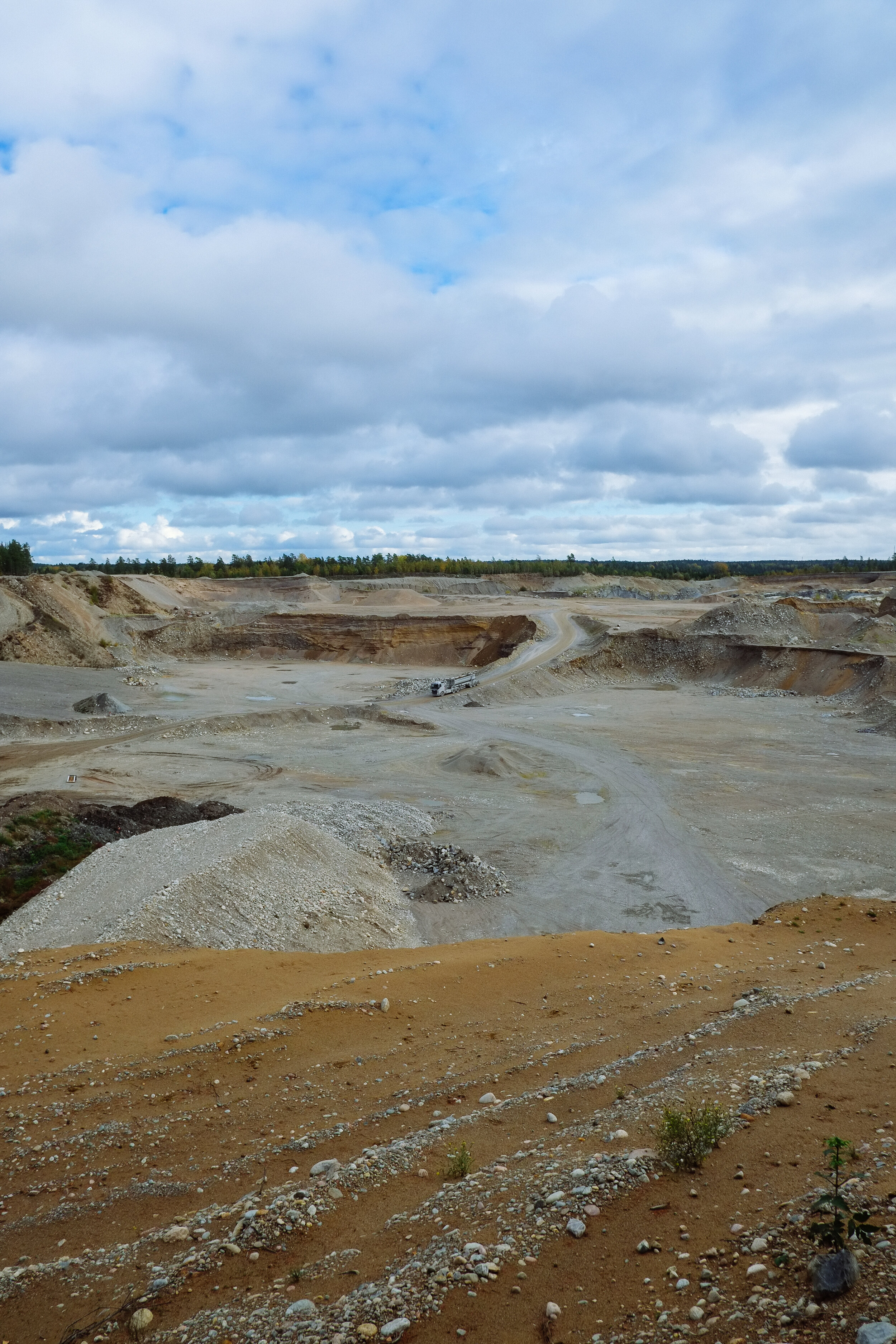
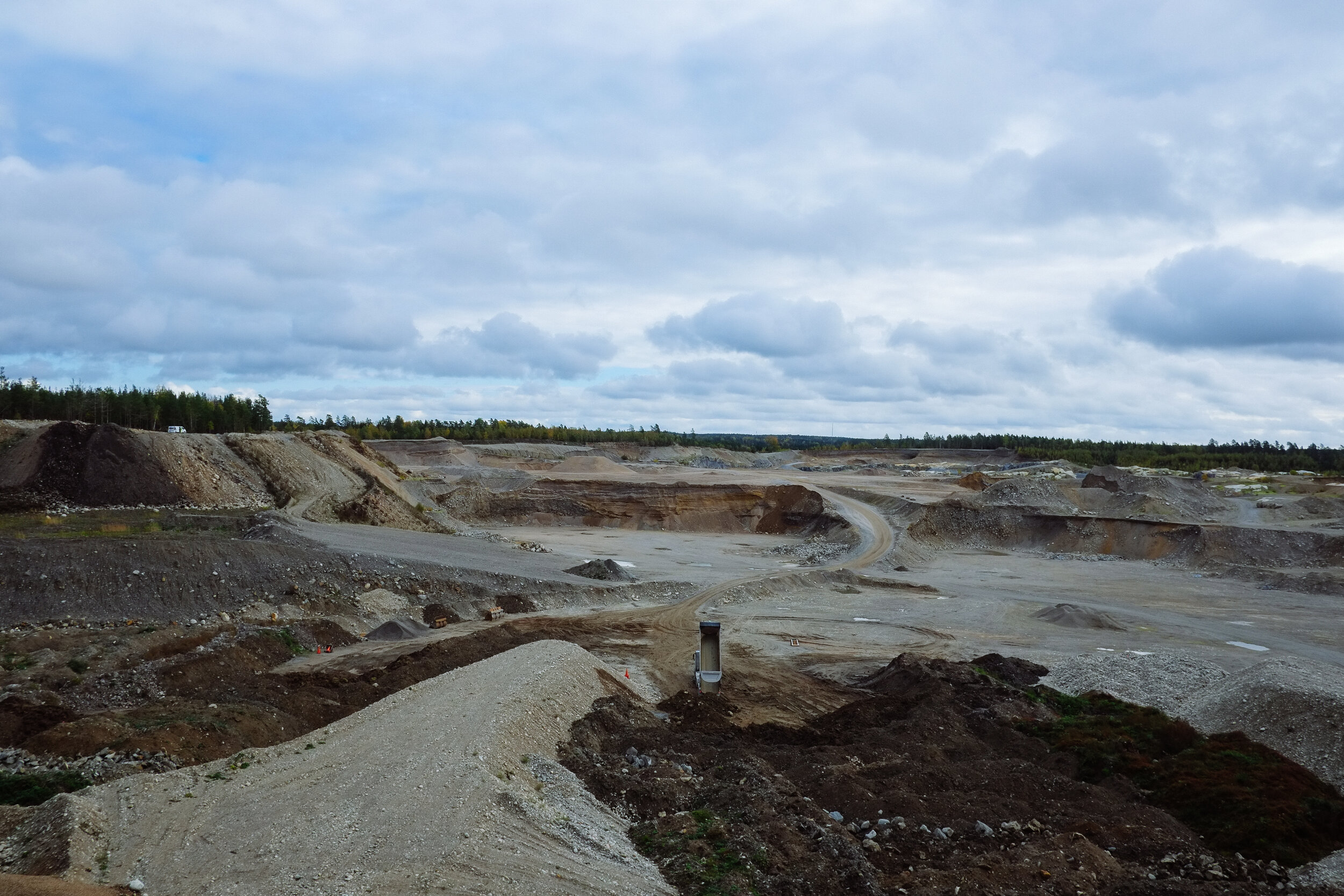
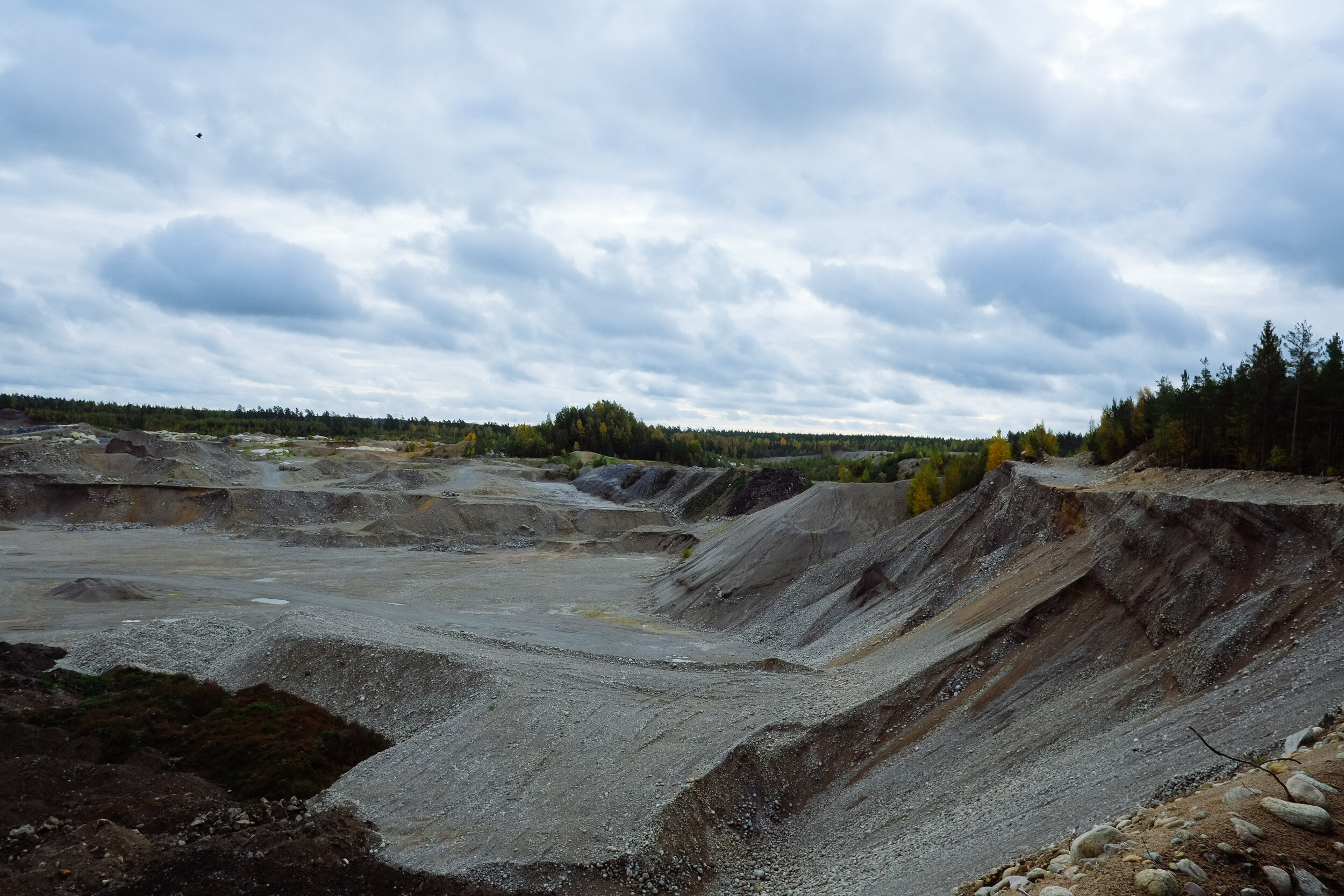
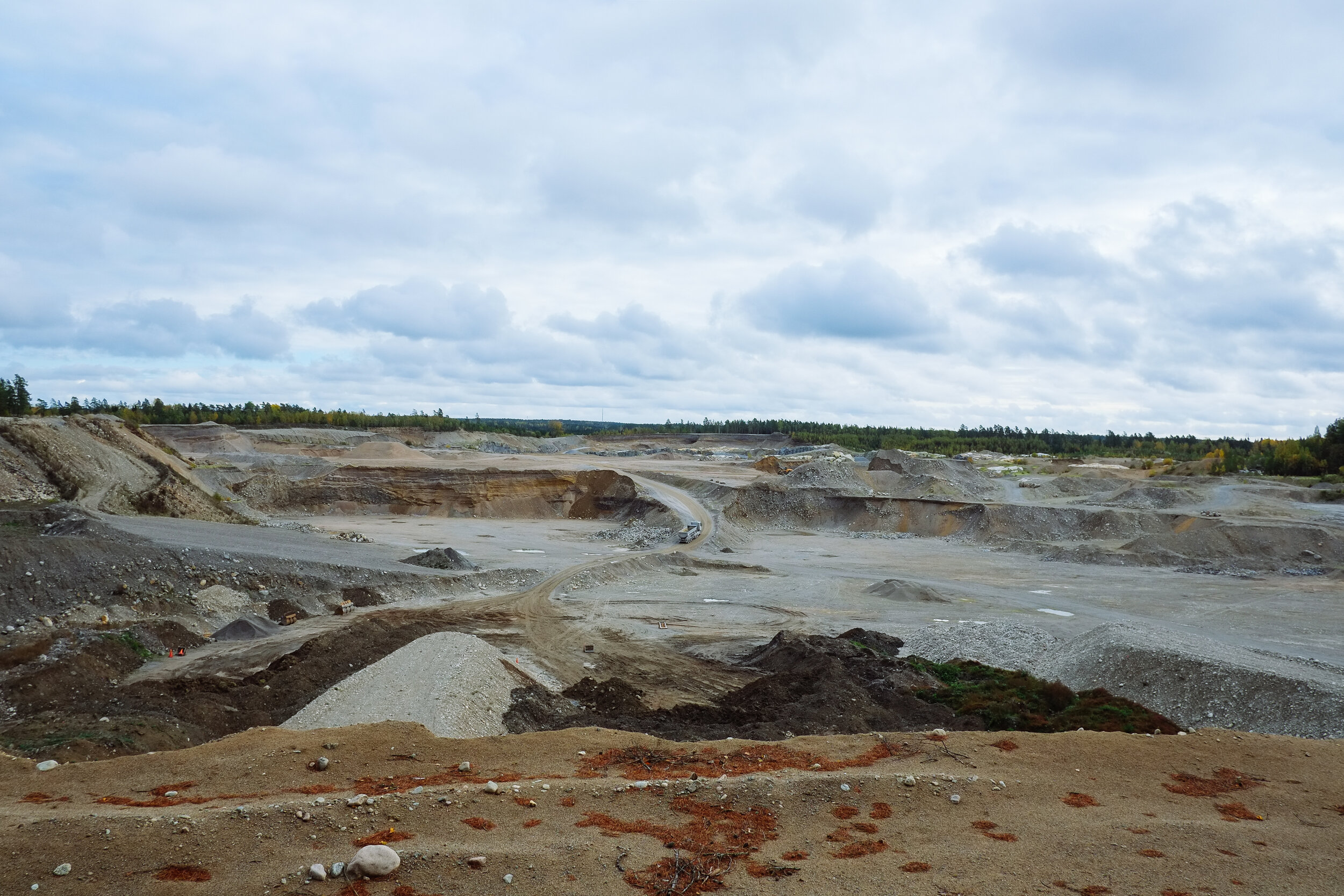

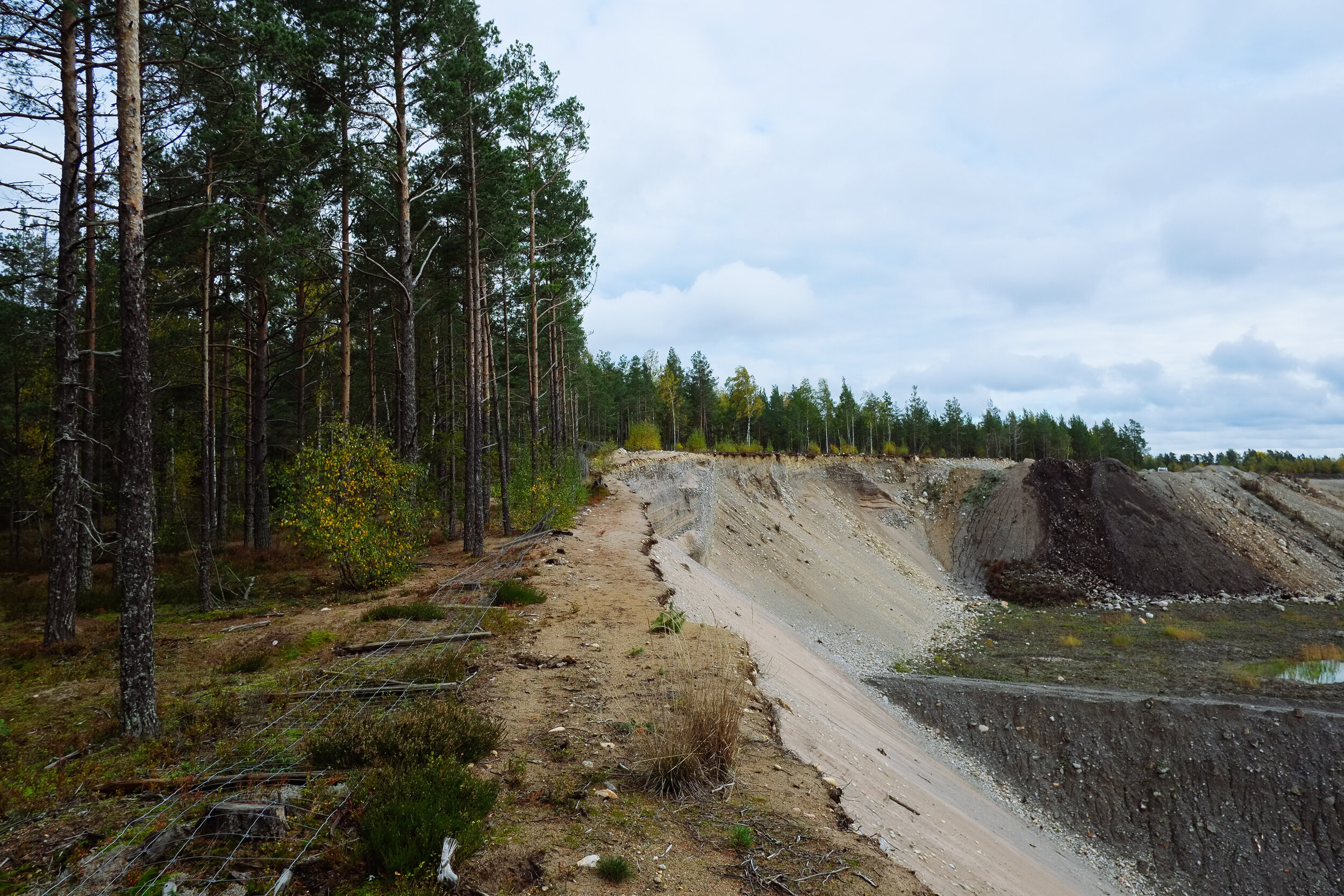
Riksten Sand and Gravel quarry (currently operated by Jehander Heidelberg). Images by Matthew Ashton.
The sand and gravel quarry could be read as a futile attempt to fight the processes of entropy, a hapless stalling tactic intended to delay an inevitable obsolescence. The quarry, like all mining and extractive enterprises, is dependent upon access to cheap nature — which in this case are the vast quantities of fluvial glacial sediment laid down during the above-mentioned episode — as well as cheap labor, favorable regulatory conditions, adequate infrastructural networks, and an accessible market, all of which could drastically change in an instant and make the extractive operation unviable.8 It is also dependent upon a host of machines and equipment, which break down, deteriorate, become inefficient, and outmoded. The mine is always in the process of becoming a former mine, an abandoned pit, a ruin. It’s a temporary gig — a smash and grab job on nature. Take what you can while you can, and then move on to the next heist. The frontiers of exploitation are constantly on the move. Landscapes of extraction are situated at what landscape architect Jane Hutton describes as “the hinge point between land and commodity” where “materials teeter uncomfortably between that which is considered natural and that which is not, between that which is intrinsically valuable and between that which is valuable for human use.”9 The kettle hole was judged to have such intrinsic value, to be worthy of preservation and thus protected from future exploitation, maintaining its status as land, while the remainder of the esker was not so lucky — land became something more liquid, more exchangeable, more profitable. Land became commodity — a product to be collected, sorted, packaged, transported, sold, and profited upon. The earth was seen to be more valuable put to work elsewhere, broken up, displaced, and recombined to construct the capsules, networks, and infrastructures which constitute the bulk of our urban environments.
PART III Material in Motion
“Matter, like meaning, is not an individually articulated or static entity. Matter is not little bits of nature, or a blank slate, surface, or site passively awaiting signification; nor is it an uncontested ground for scientific, feminist, or Marxist theories. Matter is not a support, location, referent, or source of sustainability for discourse. Matter is not immutable or passive. It does not require the mark of an external force like culture or history to complete it. Matter is always already an ongoing historicity.”10
Karen Barad
At over 50 billion tons per year, sand is the world’s second most consumed natural resource after water.11 Curiously, both sand and water appear to share some similar material traits, despite being composed of vastly different stuff — one being made up of grains of finely divided rock and mineral particles while the other is the liquid form of a transparent, tasteless, odourless chemical substance. Both sand and water are materials which appear to have an inherent momentum, a velocity, a directionality, or in the words of Deleuze and Guattari, “it is matter in movement, in flux, in variation.’’12 Sand, like water, is matter in flow — shifting, drifting, wandering, creeping, migrating, eroding, subsiding. Even when sand settles in place, as it has in the stratified ridges of the eskers that run through Stockholm, it still embodies a potentiality of motion, an urge to move enacted through unstable soils, and a propensity to topple shallow-rooted trees. All materials move, yet sand has a movement that we can grasp directly within our short human lifespans — we know it moves because we observe its movement, while the slow drift of continents, tectonic uplift of mountain ranges, formation of iron ore deposits, coal seams and oil reserves all proceed at a pace that we are incapable of perceiving.
Riksten, images by Matthew Ashton
Sand also moves because we move it — we dig it up from quarries, dredge it from rivers and lakes, steal it from beaches, sort it, wash it, dry it, load it, ship it, truck it, dump it, and most likely mix it with other materials, such as clay, limestone, bitumen and water, to mold it into a desired urban form. There it settles for a moment, fixed in an infrastructural embrace, or playing a supporting role in a minor production before eventually, the forces of entropy set it in motion once more — decay, demolition, and destruction steering the particles on a new course. As Jane Hutton writes, “Materials shape-shift as they move in and out of human controlled systems, challenging us to think of them as both formed through human action and also as having lives of their own.”13 Sand is simultaneously a natural material and a building material. We can purchase it at the hardware store in more or less the same condition as we encounter it in nature, but we can also combine it with other substances to create composite materials. According to Karen Barad “Matter is always already an ongoing historicity,”14 it has a life, orbiting through both space and time, in and out and in-between human worlds, “matter is substance in its intra-active becoming—not a thing, but a doing, a congealing of agency.”15
“Bringing things to life,” according to Tim Ingold, following on from Barad’s way of thinking, “is a matter not of adding to them a sprinkling of agency but of restoring them to the generative fluxes of the world of materials in which they came into being and continue to subsist.”16 The world of materials is not a fixed physical entity, but rather an environment that constantly shifts and unfolds, and as such, according to Ingold, “materials of which it is comprised of do not exist — like objects of the material world — but occur.”17 In this sense, materials are always processual and relational, they are practically experienced, a doing rather than a thing. To describe the properties of materials, according to Ingold, “is to tell the stories of what happens to them as they flow, mix and mutate.”18
Material (hi)stories overflow from the eroded holes of Pålamalm on the outskirts of Stockholm in an ever-expanding archive of drama, action, and intrigue emanating from the earth. All we have to do is keep our ears to the ground — and follow the material.
Matthew Ashton is an architect, designer and researcher based in Stockholm; he is co-founder of the architectural practice Sp-arc, and a PhD candidate at the School of Architecture and Design, RMIT University, Melbourne.
1 Robert Smithson, “A Tour of the Monuments of Passaic, New Jersey” first Published in Artforum, December 1967, repr. in Robert Smithson: The Collected Writings, ed. Jack Flam (Berkeley: Univ. California Press, 1996), 74.
2 Beslut och skötselplan, Pålamalms naturreservat, Länsstyrelsen i Stockholms län, 31 August 1944.
3 For more information on the geologic formation of the landscape around Pålamalm, see, Sten De Geer, “Om åspartiet Pålamalm i Södertörn,” in Geologiska föreningen i Stockholm. Förhandlingar, Volume 27:6 (1905): 402–411.
4 For more information on the history of the Riksten quarry, see Boel Ferm and Björn Strokirk, “Ut med det gamla - in med det nya” in Stenkoll, no. 114 (December 2011): 36–41.
5 Robert Smithson “Entropy Made Visible” interview with Alison Sky, On Site 4, 1973, repr. in Robert Smithson: The Collected Writings, 301.
6 For more information on the second law of thermodynamics, see https://en.wikipedia.org/wiki/Second_law_of_thermodynamics#Clausius_statement
7 Robert Smithson, “Asphalt Runway” 1969. See film: https://vimeo.com/23119204
8 Raj Patel and Jason W. Moore, A History of the World in Seven Cheap Things: A Guide to Capitalism, Nature, and the Future of the Planet (London: Verso, 2018)
9 Jane Hutton, Reciprocal Landscapes: Stories of Material Movements (New York: Routledge, 2020), 7.
10 Karen Barad, “Posthumanist Performativity: Toward an Understanding of How Matter Comes to Matter,” in Signs 28, 3 (2003): 821.
11 Vince Beiser, “Why the World is Running out of Sand,” BBC, November 18, 2019:
https://www.bbc.com/future/article/20191108-why-the-world-is-running-out-of-sand
12 Gilles Deleuze and Félix Guattari, A Thousand Plateaus, transl. B Massumi. (London: Continuum 2004), 451.
13 Hutton, Reciprocal Landscapes, 7.
14 Barad, "Posthumanist Performativity," 821.
15 Ibid, 822.
16 Tim Ingold, “Materials Against Materiality,” in Archaeological Dialogues, Volume 14, Issue 1 ( June 2007): 12.
17 Ibid, 14.
18 Ibid.


